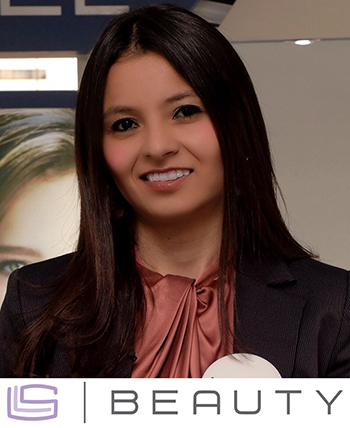
Color Cosmetics: What Consumers Are Talking About
Interview with Paola Pérez, Strategic Marketing Manager, Global B2C
Lubrizol Life Science Beauty
How did Lubrizol become interested in doing an in-depth color cosmetics study?
Makeup is one of the most dynamic categories in social media, with brands being talked about regularly through user-generated content. Therefore, a study applying artificial intelligence to social media conversations about color cosmetics was an invaluable way to gain a deeper understanding and insight into consumer pain points and beauty goals to develop new ingredients and formulations that meet their needs. The Lubrizol Life Science Beauty team is always looking for innovative skincare and cosmetic solutions that are relevant to our brand partners and help people live a more beautiful life.
What methodology was used to conduct the study?
Between May 2019 and May 2020, 20 million sources from across the internet, including social platforms, forums and reviews, were analyzed in partnership with market research firm 113 Industries for beauty conversations related to the face, eyes, lips and nails. Artificial Intelligence technology enabled the extractions of the most relevant conversations while removing advertising, influencer and bot-related content. A human team then reviewed the remaining content, extracting patterns and trends.
What general trends did the study uncover?
General trends related to product claims and benefits:
- There was a consistent spike of conversation related to product benefits and claims compared to conversation around shades, colors and makeup looks throughout most of 2020. Additionally, skincare was the top hashtag included in posts when consumers talked about makeup showing the connection between makeup routines and skincare.
- There are some new types of products that generated more conversation than traditional products. For example, foundations were not necessarily the most common topic related to the face and for lips, and lip gloss saw more conversation than other lip products.
- Makeup staples such as lipstick, blush and foundation dominated the conversation and are most often deemed ”holy grail” products by consumers when they find desired performance and texture.
Were you able to categorize types of beauty consumers from their conversations?
Yes, our team uncovered four main types of beauty consumers that contribute to online conversations:
- The Personal Brand Builder– is an individual whose online presence is dedicated to makeup with the intent of building their brand and/or business in the category. They are key thought leaders in the cosmetic space: they lead trends and set example behaviors.
- The Personal Hobbyist– gets joy from their relationship with makeup and wants to continue to expand their knowledge. The willingness to expand their knowledge and collection of cosmetics makes them highly receptive to social influence and new trends.
- The Simple Everyday User– has a simple routine for everyday use that is efficient and serves its intended purpose. They are seeking a reliable product they feel confident will live up to its claims – likely to be set in their habits and not open to change.
- The Inexperienced Buyer– has limited knowledge, but has a desire to improve upon what they already know. They are seeking guidance and are very willing to learn; their behaviors and decisions are often based on advice from others.
Regardless of their type, are beauty consumers generally pleased with their cosmetic purchases?
While consumers are looking for “holy grail” products to add to their routines, the team has been able to identify a number of areas where consumers would like to see improvement such as long wear or natural looking solutions. In the meantime:
- Consumers compensate by continuously buying new brands and products until pleased, increasing the number of steps in their makeup routine or by using products in their makeup routine. They sacrifice on one attribute to satisfy another, and they subscribe to beauty boxes or travel sizes to sample before buying full sized. However, it’s important for formulators to keep in mind that once they find a “holy grail” product, they are loyal to it.
- Consumers struggle to find makeup solutions that stay in place, especially mascara, lipstick and foundation. As a result, they compensate by using other products to stop the spread, like powder on the undereye, concealer on the eyelid to prime before eyeshadow, and setting spray to avoid transfer onto other surfaces.
- Consumers struggle to find products that mimic true facial features (foundation that is not cakey, heavy, clumpy; eyeshadow/blush/lipstick that is not excessively bold or dark), so they compensate by using products in unintended ways to achieve a less dramatic look. For example, using brow pencil as eyeliner or brow gel as mascara.
How does this translate to product development?
Artificial Intelligence has given us a window into consumer thoughts and behavior that previously wasn’t available. This gives brands the opportunity to develop products that truly resonate with consumers and solve for the things they don’t like in existing face, eye, lip and nail products. The guesswork is taken out of the equation, increasing the likelihood that consumers will try a new product, fall in love with it and add it to their “holy grail” list of cosmetic staples.
For those wanting to learn more about study results, how can they learn more?
Companies can reach out to our team at www.lubrizol.com/beauty to learn more about the study and how its insights can benefit their brands and product formulation.




